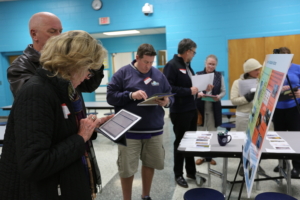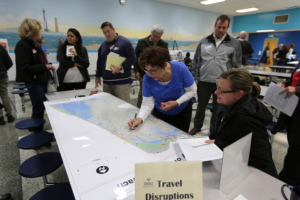ODU Researchers Engage Community About Flood Adaptation

Flooding and sea level rise (SLR) pose a problem to nearly every part of the Hampton Roads area. A research team from Old Dominion University (ODU) Institute for Coastal Adaptation and Resilience designed the Action-Oriented Stakeholder Engagement for a Resilient Tomorrow (ASERT) framework to engage stakeholders in adaptation actions in response to flooding and SLR.
Participatory modeling
Wie Yusuf, the head of the program and professor in the School of Public Service at ODU, explained that many residents want to be part of the decision-making, but don’t know how to get involved. ASERT was designed to facilitate community resilience building by promoting collaboration and effective communication. Flooding and sea level rise can be contentious issues and Yusuf shared ASERT is a productive way for “residents to provide input for decision making while also diffusing tension around the topics.”

In the demonstration pilot project, ASERT was used to look at areas where flooding spanned multiple neighborhoods, two cities, and a federal base. Residents engaged in participatory mapping on the weTable where they could visualize and identify community assets threatened by SLR, allowing for the team to capture priorities for residents. Yusuf highlighted that this concept allowed participants to add a narrative to the map they were drawing. She shared that as more stakeholders participated in the stations, they realized they could make a difference and were able to speak in a more constructive way.
Incorporating ASERT into planning
The ASERT framework has been applied to other contexts, such as the City of Virginia Beach Comprehensive Sea Level Rise Planning Process. Virginia Beach was considering six different massive infrastructure projects and wanted input on how residents perceived and prioritized the different projects. Yusuf shared that using ASERT her team was able to collect information that provided the city with some preliminary insight into how this information would be received. They incorporated these insights early into the planning process and were able to provide solutions when it came time for public feedback.
Yusuf hopes that adding an online component to ASERT in the future will engage a wider range of residents. “By going online, you expand the range of people that can participate,” she explained, “and having that diverse participation is key.” She also highlighted the wide expertise range of the ASERT team in its success. “We have experts in risk communication and rhetoric, science communication, community engagement, and engineering. This really benefits the community because we have the ability to look at this problem and offer solutions from different angles.”
